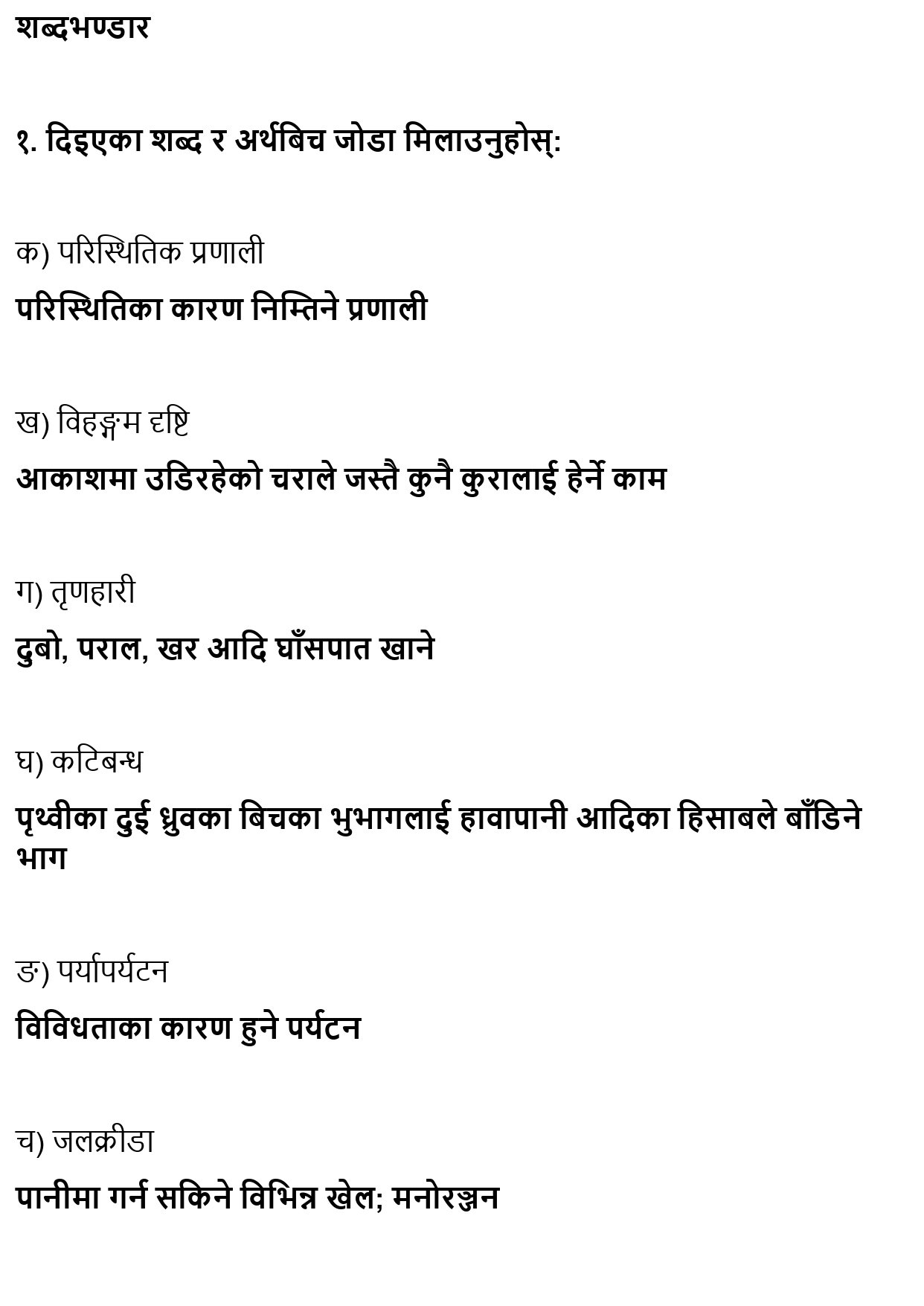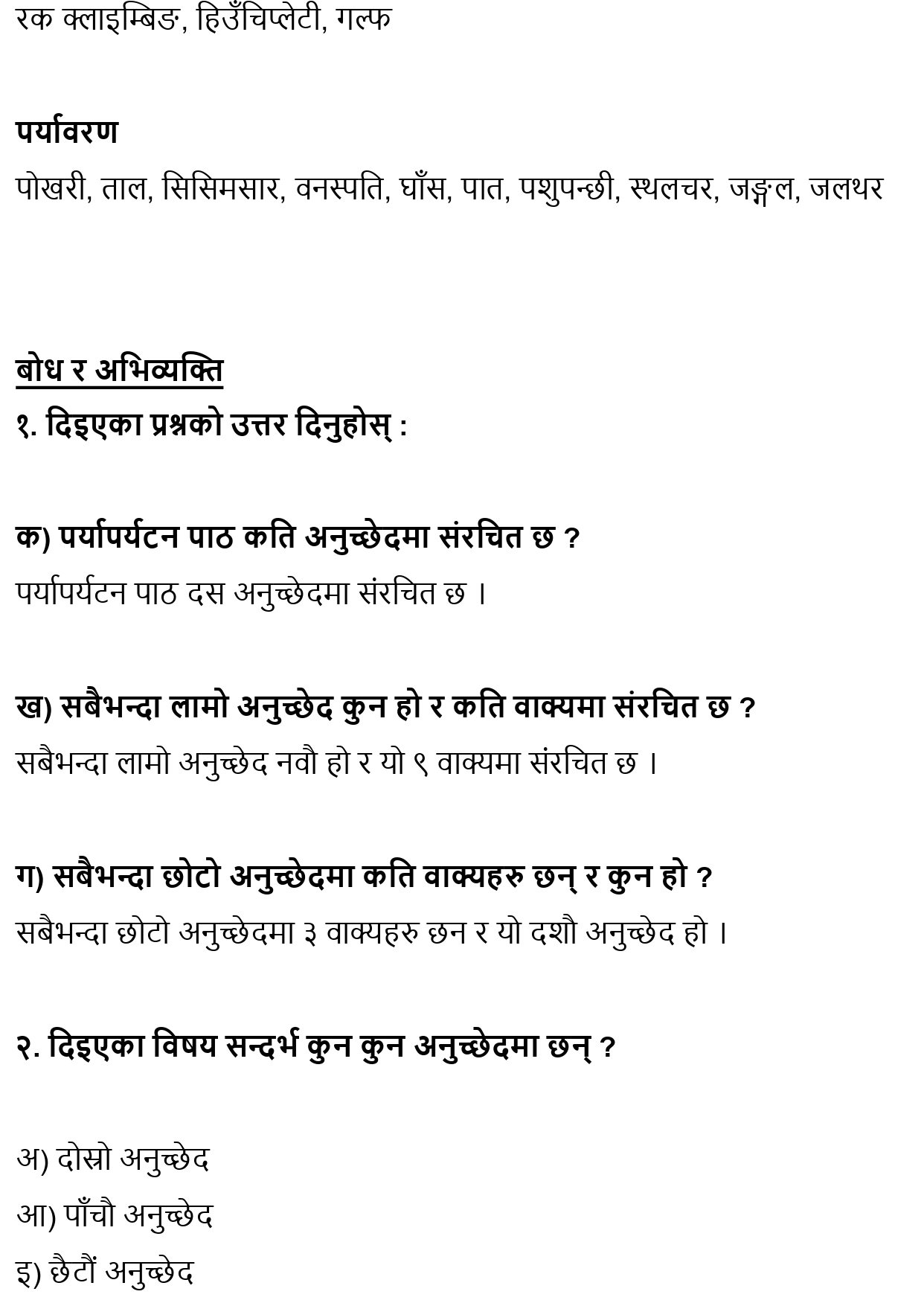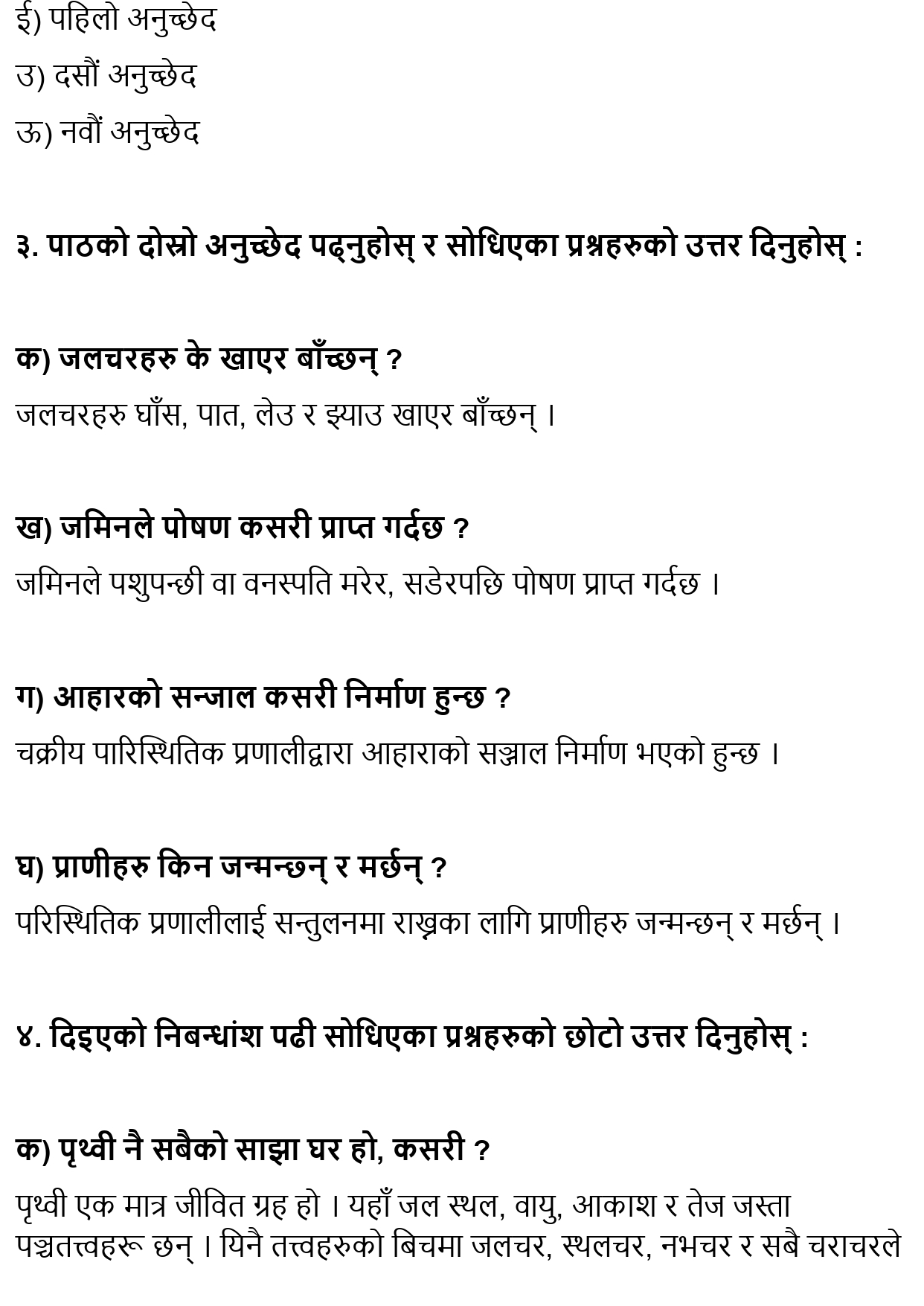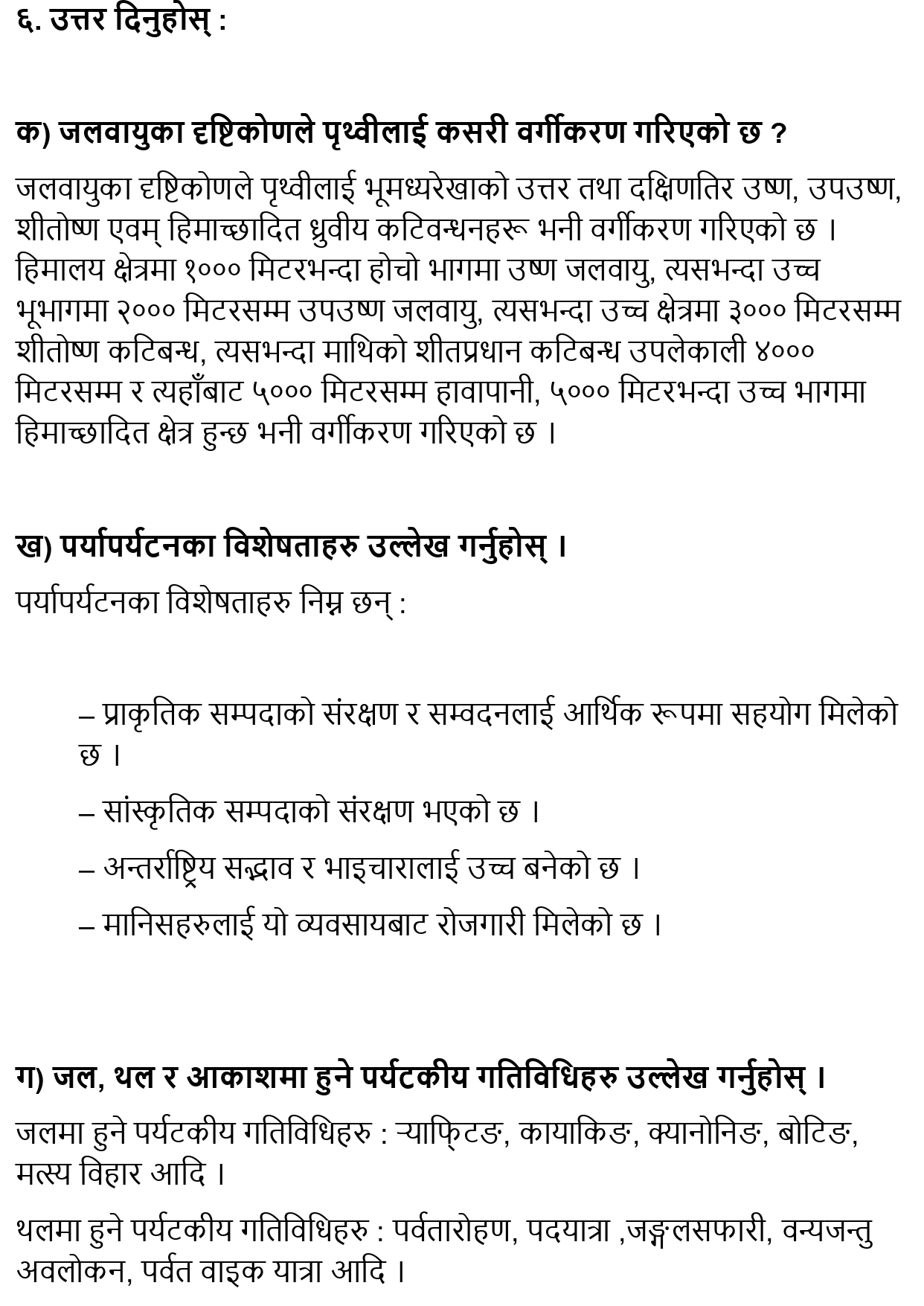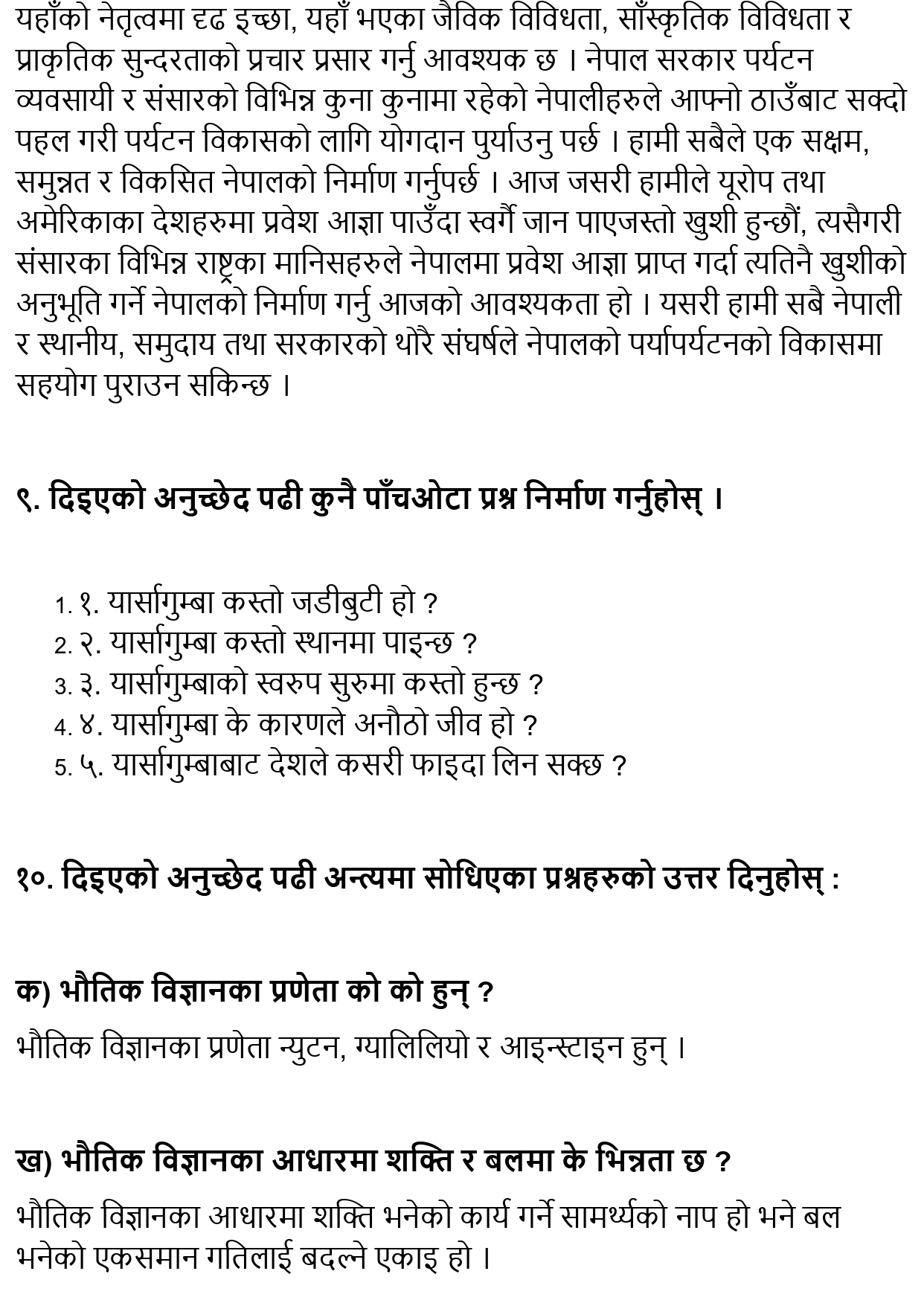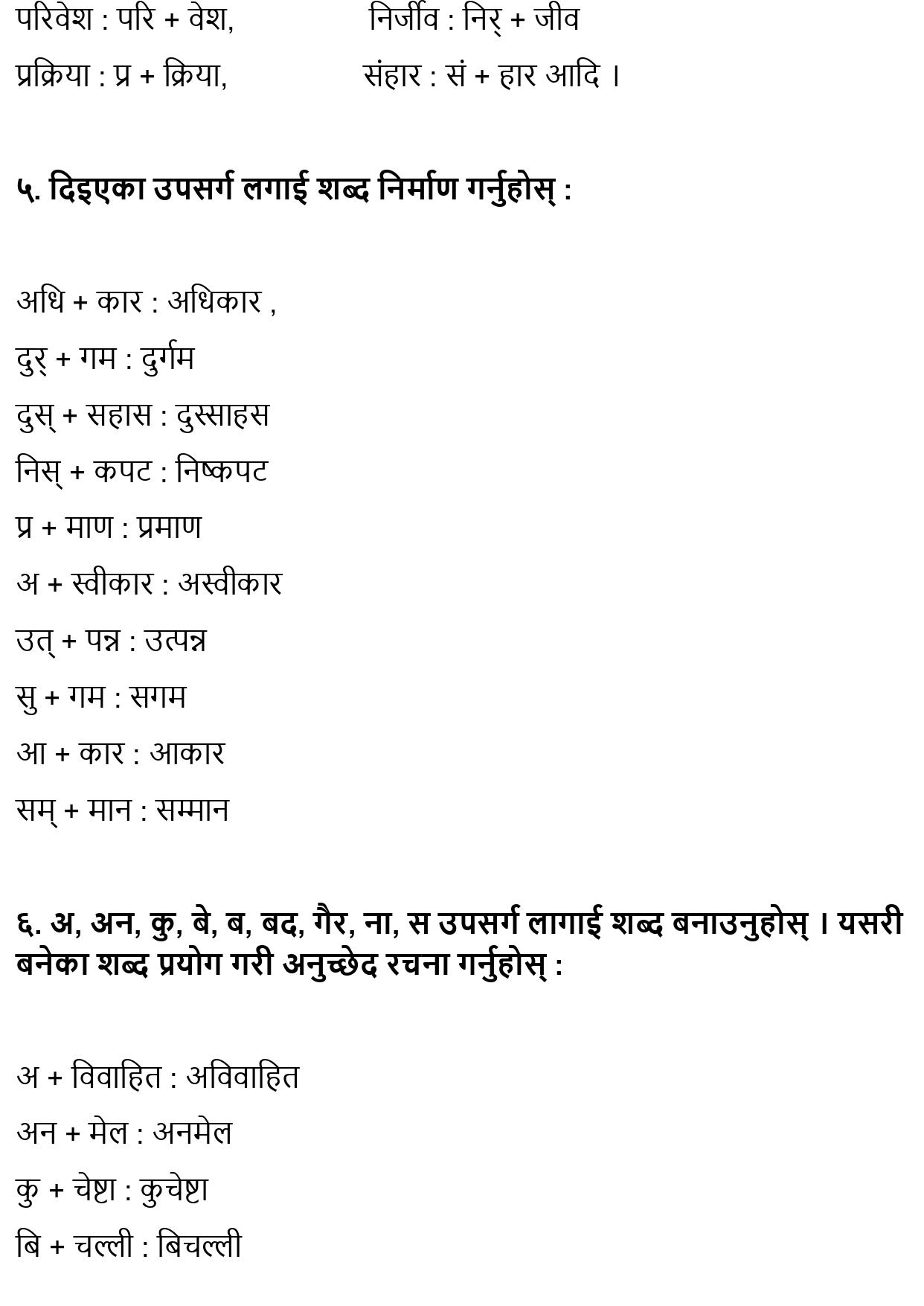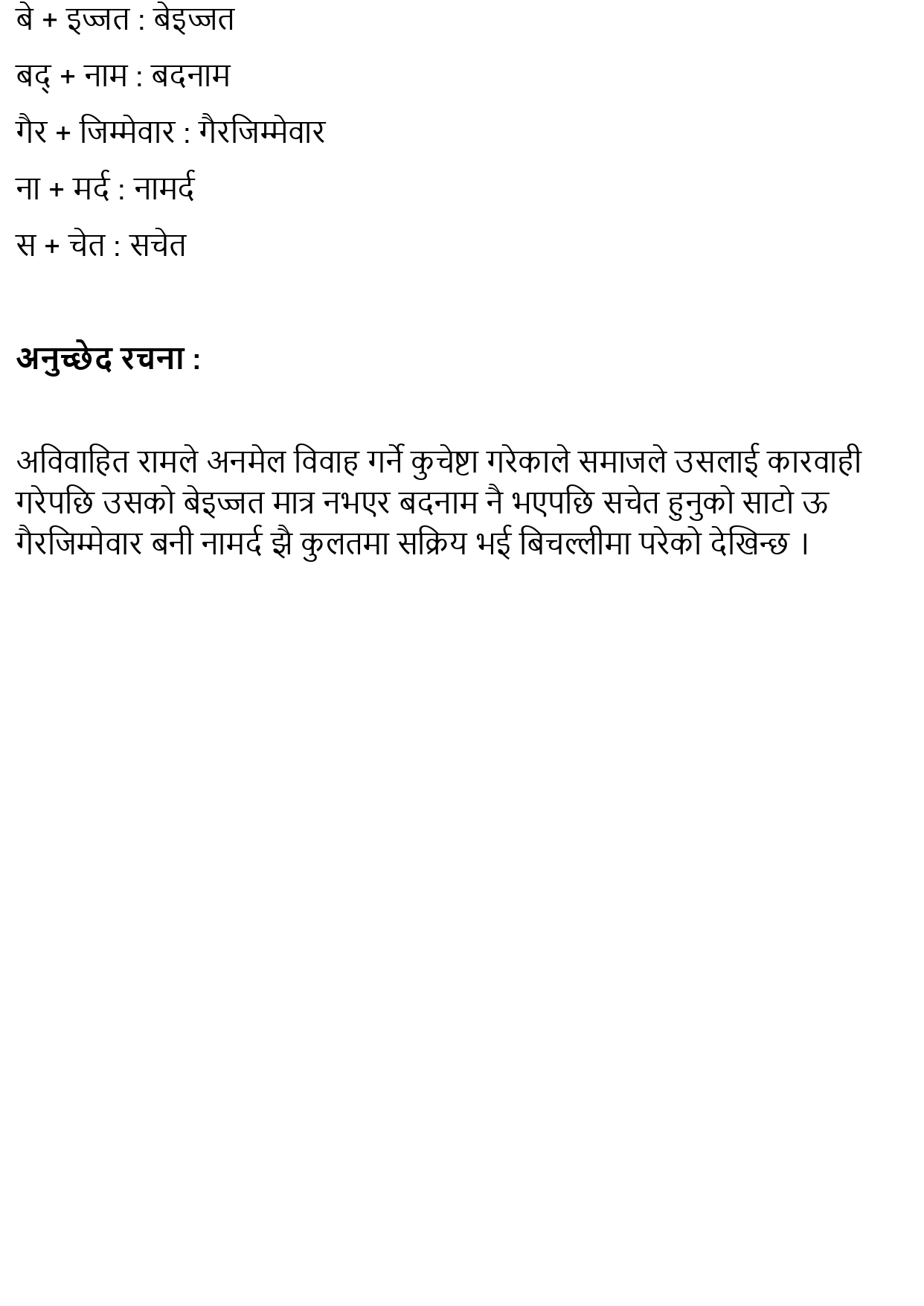Unit 7: Paryaparyatan ka Sambhavana ra Aayam
Bastu parak Nibanda (Objective Essay) – Tirtha Bahadur Shrestha
This chapter is an essay, "Paryaparyatan ka Sambhawana ra Aayam" by Tirtha Bahadur Shrestha that discusses Nepal’s ecosystem, ecological diversity, natural beauty, biodiversity, and tourism. This is translated from English phrase " Possibilities of Travel and Tourism in Nepal".
Check:
Class 11 Model Question (All Subject)
Class 11 Nepali Model Question 2080 (With Solution)
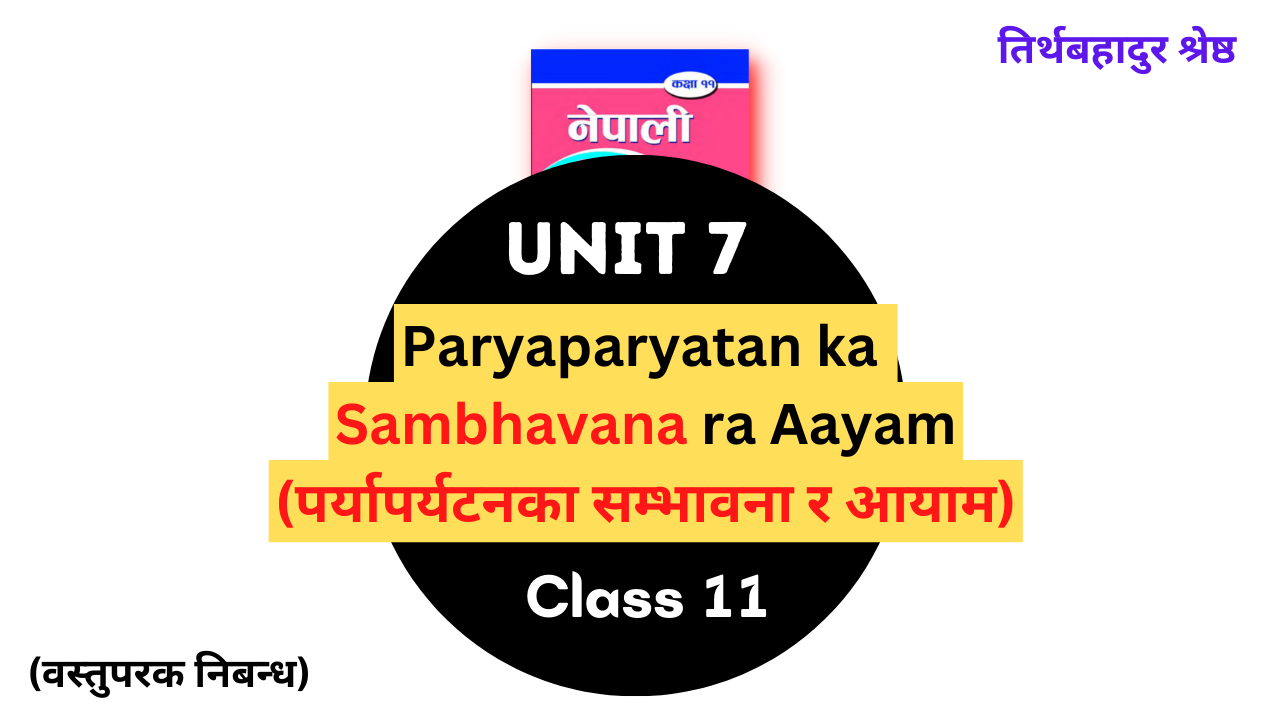
Complete Exercise, Question Answer Solution, Grammar, Summary of Chapter 7 Class 11 Nepali, Paryaparyatan ka Sambhavana ra Aayam is provided as:
Paryaparyatan ka Sambhavana ra Aayam Summary:
The prefix ‘eco’ has many meanings that relate to the balance and harmony between humans, nature, and the environment. The Earth is our shared home, where we coexist with other living beings that depend on the five elements: water, land, air, sky, and light. No other planet has life as we know it, so we should cherish and protect our planet. There is nowhere else for us to go.
Everything in the natural environment of the Earth is interconnected. From a small pond to a vast ocean, the ecosystem has a complex food web that links everyone together. Plants and animals exchange resources and energy in a continuous cycle. This is how an ecosystem works.
If we damage or destroy the Earth’s ecosystem, we will endanger our existence. Nepal’s environment and ecosystem can be compared to a five-story tower. The Terai region is on the ground floor; the Chure Madhes and benshi region is on the first floor; the hilly region is on the second floor; the hilly (Uplekali) region is on the third floor; the high mountain (Lekali) region is on the fourth floor; and the snow-capped peaks are on the roof. On the northern side of this tower lies Bardalike province. Nepal’s natural diversity and beauty attract many tourists from around the world.
Tourism that relies on environmental, natural, and cultural attractions needs special management. This is what eco-tourism means. Eco-tourism aims to keep the environment clean and undisturbed. It also supports nature conservation by providing financial and technical resources. Moreover, it benefits local communities by improving their livelihoods.
According to current statistics, Nepal receives about 11 lakh foreign tourists every year. The Government of Nepal wants to increase this number.
We should welcome tourists into our natural home, our ecosystem. We should make sure that their presence does not harm our environment and ecosystem. In the tourism business, both the host and the guest have a responsibility. Only tourism that follows eco-friendly practices can be considered eco-tourism. Tourists can enjoy various activities on water, land, and sky.
Nepal has many opportunities and dimensions for tourism, such as mountaineering, trekking, boating, paragliding and more. These activities attract visitors who enjoy the natural beauty and cultural diversity of Nepal. However, tourism should also be eco-friendly and respect the environment. This means following policies, rules, laws and codes of conduct that protect the ecosystem and prevent pollution.
Tourism can also promote rural development, cultural preservation, spiritual growth and education. It can create jobs for the local people and encourage them to stay in their villages. It can also foster pride and awareness of their heritage and stories.
In summary, tourism is a blessing for Nepal if it is done in a responsible way that does not harm the environment.
This is a summary of “Paryaparyatanka sambhavana ra Aayam”.
Also read:
Chapter 8: Lau Aayo Taja Khabar
Class 11 Nepali All Unit Exercise Question Answer Summary
We Covered:
- Paryaparyatan Ka Sambhawana Ra Aayam Exercise, Question Answer Solution
- Paryaparyatan Ka Sambhawana Ra Aayam Grammar
- Paryaparyatan Ka Sambhawana Ra Aayam Short Summary
